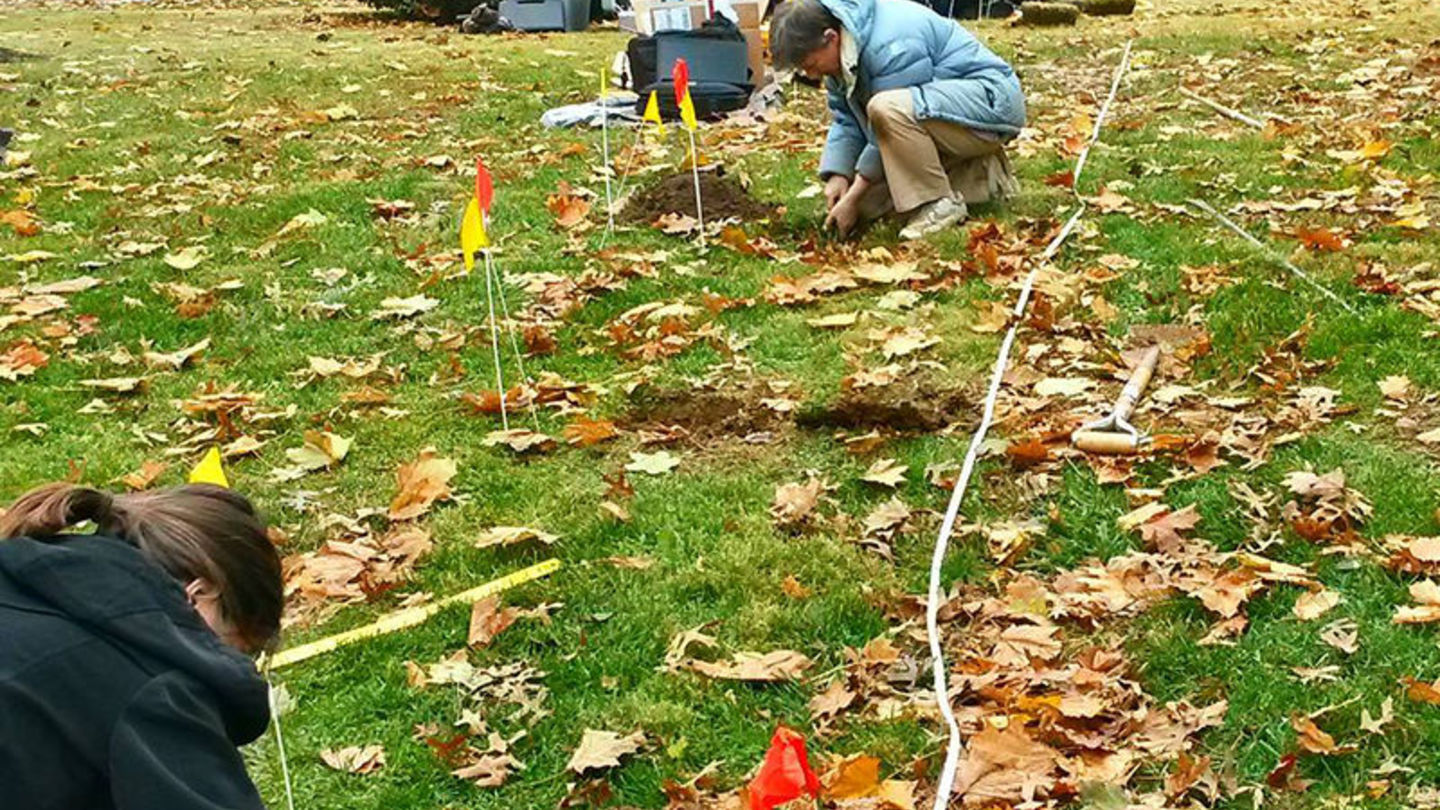
Anyone driving by the former site of the Gilbert House on Meetinghouse Road is likely to simply see it as an empty, grassy field.
For faculty and student researchers in Temple's College of Science and Technology, it's a research opportunity. The quiet suburban field, located at Temple University Ambler, is providing the perfect location to study urban water infiltration.
Dr. Laura Toran, Professor of Earth and Environmental Science (EES) in Temple's College of Science and Technology, and the Weeks Chair in Environmental Geology, is using the controlled site on campus to emulate the location of former building structures in urban environments in cooperation with Dr. Jonathan Nyquist, Temple's Director of General Education and Professor in EES, and Gina Pope, who is pursuing her doctoral degree in geoscience.
The project — initially titled "Mapping Water Infiltration of Urban Soils Using Electromagnetic Induction and Time-Lapse Electrical Resistivity Tomography" — is making use of the former site of the Gilbert House, a location donated to Temple many years ago.
"One thing we were able to determine early on is that electromagnetic induction wasn't as effective in mapping infiltration as we hoped it would be, so we innovated and focused on creating permanent sensors. We're solely focused on electrical resistivity now," said Toran. "We installed a permanent electrical resistivity system located on site, something that's really just been invented in the last couple of years so we are working some of the kinks out of the system. The system had been running out of energy — we've added a second solar panel enabling us to send data back to Main Campus as needed."
Pope, who received her master's degree in geology from Baylor University, said the hands-on field work and the opportunity to work with Drs. Toran and Nyquist were among the reason she chose Temple for her doctoral studies.
"I really wanted to be able to build the system we're using to collect data. There were a lot of challenges — I'd only ever used a screwdriver before," she said. "The solar panels, the battery, the cable system — creating this system was a great confidence builder and a terrific way to further connect with the research. One of the benefits for working with Dr. Toran and Dr. Nyquist is the sheer variety of geophysical and hydrological field work involved."
According to Toran, the site at Temple Ambler is an excellent surrogate for vacant lots in Philadelphia that is "accessible and safe for long-term testing and potentially gives us multiple zones of infiltration — grass, driveway and house foundation material."
"The Environmental Protection Agency is interested in the characterization of vacant lots, of which there are about 40,000 in Philadelphia alone. The EPA has Stormwater Management Models (SWMM) that are used around the world for planning, analysis and design related to stormwater runoff with a focus on urban areas," said Nyquist. "In these models, urban lots are all given a constant value for 'grass' — this becomes an issue because natural grassy land has high infiltration. These lots, however, are often much different than natural grass, depending largely on demolition practices."
Researchers are using electrical resistivity tomography (ERT) "to measure soil moisture and electrical conductivity to identify patterns for other (faster) types of monitoring," said Toran.
"One inexplicable pattern that we've run into is high conductivity near where the driveway used to be," she said. "A possible explanation that we are exploring is that a lot of road salt was used on the driveway, which may increase conductivity."
The goal of the project, Toran said, "is to understand how water infiltrates urban soils."
"Ultimately we hope to develop a better predictor for urban infiltration — there is very little data available about urban infiltration and you can't assume very much about it," she said. "Urban site are wild cards, infrastructure gets in the way, populations can get in the way. That's why the Ambler Campus site makes such an excellent test case — we know exactly what was here."
